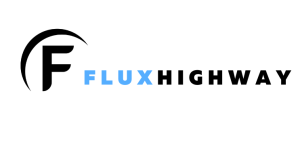What drives Flux’s ecosystem? – parallel assets! Flux is the world’s largest decentralized network now. It is the leading driver of cutting-edge innovation in Web3, cloud infrastructure and blockchain technology. This article covers how its parallel assets provide Flux with the fluidity it needs to cut across different other blockchains and Defi platforms and will give rise to more possibilities in the future.

When Zel evolved into Flux during the bull run of 2021, the mission was apparent; to build a scalable, decentralized network of computing power for the people, by the people. The native cryptocurrency rebranded, and there were already over a thousand active decentralized nodes operating on the FluxNodes network. But there was still a piece of the puzzle missing.
One of the core goals of Flux is to become the face of Web3 and create an interoperable ecosystem. While the native coin ($Flux) was doing well, it only existed on the Flux blockchain. What if Flux equivalents could reside on other blockchains, totally compatible with those blockchains, and yet retain the uniqueness of the Flux network? This question birthed the idea of parallel assets.
But then, what exactly is a parallel asset?
Parallel assets are Flux tokens ‘living’ on other blockchains. They are considered parallel because they can be easily converted to native Flux in a 1:1 equivalent, regardless of price fluctuations on the network where they reside. Parallel assets can be likened to token bridges that allow assets to be ported from one blockchain to another using a simple ( though technically complicated) mechanism. The process typically consists of locking the coins on the originating blockchain (in this case, Flux) and then minting tokens on the destination chain. If the user wants to move those assets back to their chain of origin, the tokens on the destination chain may be transferred. The coins on Flux would then be released for spending once again.
In April 2021, Flux launched its first parallel asset, Flux-Kadena, followed by Flux-ETH and Flux-BSC existing on the Ethereum and Binance Smart Chain, respectively. By the 3rd quarter of 2021, Flux-Sol and Flux-Tron were distributed to native Flux holders. In all, there are going to be ten parallel assets. Flux-Luna and Flux-Avax are already scheduled for launch this year (2022) by May, which leaves three remaining parallel assets. To take a deep dive into the economics behind parallel asset distribution and mining, check out the Flux official release. Sure, parallel assets are a great idea with rewards for Flux holders, node operators, and miners via airdrops and Parallel mining.
However, the question to address is; How exactly will parallel assets shape Defi in the Flux ecosystem and beyond?
To understand this, let’s glance at decentralized finance (Defi). The core of this innovation was how to bypass third parties, e.g., banks and other intermediaries, by leveraging a decentralized financial system powered by smart contracts. There has to be a way of interaction between different exchanges and Defi platforms to achieve this. For example, while the Flux ecosystem already allows users to stake $ Flux on Coinmetro and earn interest on their deposits, this is only limited to native Flux. All other benefits of $ Flux, including rewards for powering the Flux computational network and voting credits in the Flux XDAO, are also limited to the Flux blockchain. Parallel assets give Flux the fluidity it needs to cut across different other blockchains and Defi platforms.
PancakeSwap, as a case study, boasts of over 3 million users, making it the top Defi platform running on the Binance Smart chain (BSC). Now using Flux-BSC, Flux holders can participate on this network, trade assets, join mining pools, transact NTFS, and even farm liquidity.
Uniswap also provides trustless, interoperable, and permissionless trading to swap any two assets on the ethereum network without needing a centralized order book. The Dex uses an automated market system to provide users with the best possible market rates while only requiring a connected Web3.0 wallet. Now, since Flux’s parallel asset Flux-ETH resides on the ethereum blockchain, holders can actively participate and enjoy the opportunities Uniswap has to offer while swapping back to native Flux anytime conveniently without a loss in value.
Expand that lens to the Solana network with its fast transaction speeds and low costs, Tron with its proof of stake consensus system, Kadena with its high throughput (plus almost-free gas fees), and you start to grasp the massive potential of all ten flux parallel assets when deployed.
Parallel assets can be integrated with different applications, including those of decentralized finance on the Flux computational network, thus, removing the risks of those applications being limited to the Flux network. This way, development teams working on projects using Flux can maintain the uniqueness of their blockchains while still being able to access all the infrastructure they need in the Flux ecosystem. The Flux operating system (FluxOS) takes the interoperability provided by parallel assets further by enabling developers to run any application on any blockchain, thanks to the software’s cross-compatibility.
Another advantage that comes with Flux parallel assets is the creation of new opportunities for arbitrage trading. Flux traders can spot differences in the price of flux parallel assets across different DEXs and quickly take advantage of them by swapping native Flux for that parallel asset. This can happen in only a few seconds by using ‘Fusion’ built into the Flux wallet (Zelcore). In addition, since Zelcore supports decentralized exchanges (Serum Dex and Binance), centralized exchanges (Stex and Gemini), along with hybrid exchanges such as Kucoin and gate.io, cross-platform transactions can take place right in the wallet.
Putting it into perspective that Flux parallel assets only kicked off a year ago, and it already has many use-cases. Imagine the possibilities and transformation they could bring into Defi and the Web3 internet in the coming years. Since its hard fork from Zelcash in 2021, the Flux ecosystem has continued to be a leading driver of cutting-edge innovation in Web3, cloud infrastructure, and blockchain technology. Parallel assets are thus guaranteed to bring in a new wave of possibilities; cross-chain interoperability, blockchain portability, platform flexibility……the list is endless.
About FluxHighway
FlusHighway is dedicated providing you the latest news about Flux (FLUX), and other decentralized Web3 projects in the crypto industry. Our goal at FluxHighway is to provide you with the best and most exclusive information about the crypto industry.
Although the material contained in this website was prepared based on information from public and private sources that Fluxhighway.com believes to be reliable, no representation, warranty or undertaking, stated or implied, is given as to the accuracy of the information contained herein, and Fluxhighway.com expressly disclaims any liability for the accuracy and completeness of the information contained in this website.
Via this site: https://medium.com/@fluxofficial/exploring-parallel-assets-in-the-flux-ecosystem-ea40012429d0

